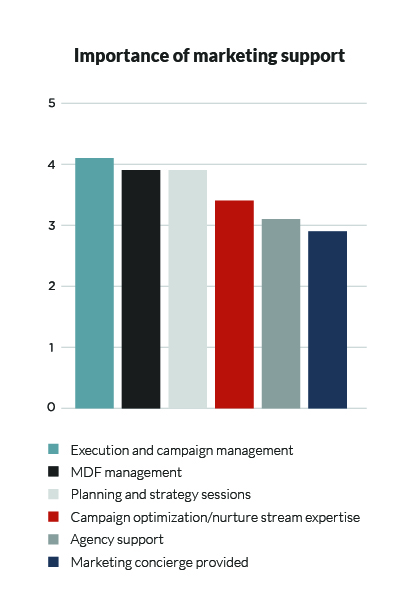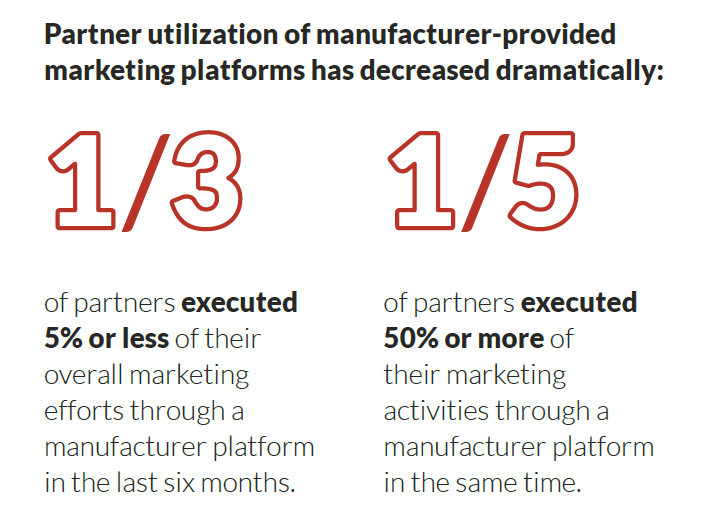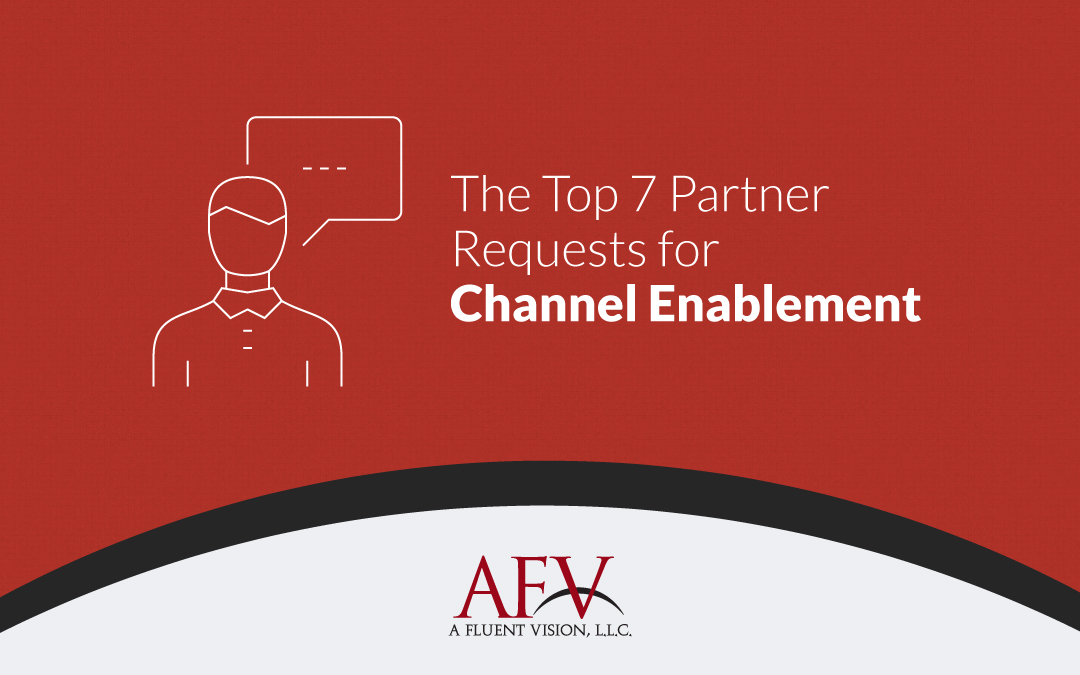The IT channel is becoming more collaborative than ever before. Manufacturer channel programs are highly focused on adopting co-selling models with partners at all levels. But to make that successful, manufacturers really must listen to partner feedback on what makes a channel marketing program worth participating in.
In some cases, manufacturers have absolutely nailed it. They’ve built out a program that runs within reasonable business process standards, can or has scaled at a global level, and generates the highest ROI for themselves and their partners. But, there are always opportunities for improvement. In this blog, we’ll discuss the top 7 partner requests for channel enablement.
1. Tell me how to get started
It’s imperative to have an onboarding process. Whether you’re updating a channel program for your most loyal partners or recruiting new partners into your awesome channel program, they need to know how to get started. The best way to help them do this is by providing program documentation, and a dedicated representative to speak with for support and guidance.
2. Give me access to knowledgeable resources
Depending on the partner marketing model you choose, and the complexity of your program, the level of support is going to vary from one-to-few and one-to-many. Regardless of how many partners a single representative will support, they need to be of high quality.
What is “high quality” support? I’m glad you asked.
According to our research, a support representative should have IT industry knowledge, understand your products and solutions, and have recommended best practices to help partners excel within your program. Partners need the most support in executing and managing marketing campaigns, allocating and reporting MDF, and aligning their marketing to overall business goals.

3. Allow for content/asset customization
It’s great if you want to prepare content and marketing assets for your partners and get them to market quickly. In fact, for partners with less marketing experience and a smaller marketing infrastructure, it’s a huge help. However, even your smallest partners still need to represent their own brands.Leading with their brand will help partners differentiate themselves. And while your partnership is a contributing factor, that’s only one facet of their business. Allow co-branding on your marketing assets, even encourage content creation. Provide color options so partners can represent their brand. Enable customizable text sections on emails or landing pages for partners to state their value.
Not all partners will use this, but those that do will be very happy about it.
4. Accessible materials
Speaking of assets, let’s talk content hubs. So many resources go into partner enablement: marketing assets and campaigns, PowerPoint pitch decks, sales scripts, data sheets, case studies, and incentive programs—manufacturers provide it all! But it’s rarely easy to find.
“With as many partners as we have, searching for created content in a huge library takes too much time. I need someone to put three options in front of me so I can move to my next task.”
When developing your partner content hub, keep in mind the volume of content, how you categorize it, and how you’ll help partners get access.
5. Don’t add to my workload
Remember, your partnership is just one facet of a partner’s organization. So your channel program is likely one of a few in which any partner is engaged. To optimize program engagement, you cannot add to a partner’s workload. Do not force the utilization of a marketing automation platform. Some partners may take advantage of the tools you provide because they don’t have their own marketing automation. Remember there’s a learning curve associated with new technologies. Unless partners have a dedicated representative available to help navigate these platforms, you will suffer from low adoption and utilization rates.

6. Money, please
It costs money to make money, and partners are more than happy to spend your money. However, partners frequently fail to spend funds because they misunderstand guidelines and restrictions, or miss deadlines. Providing additional support is a great way to reinforce funding programs, whether that be long-term support or follow-up as deadlines approach. It is for this reason that partners rated ‘MDF management’ as the second most important aspect of marketing support.
7. Don’t steal my deal
The ultimate goal of any channel marketing program is closed-loop reporting to measure ROI. No matter how loyal a partner you may have, they are probably still wary of sharing leads and opportunities because there is a perception they will lose large deals to another partner. Transparency and communication are key, especially when it comes to deal registration.
The future of Partner Marketing
As co-selling models continue to grow, it’s imperative to the success of these programs that expectations are set with partners from the onset. This will improve collaboration and mitigate channel conflict. Understanding these 7 partner requests for channel enablement can create a foundation for a great channel program and overall partnership.
Interested in the full research?

